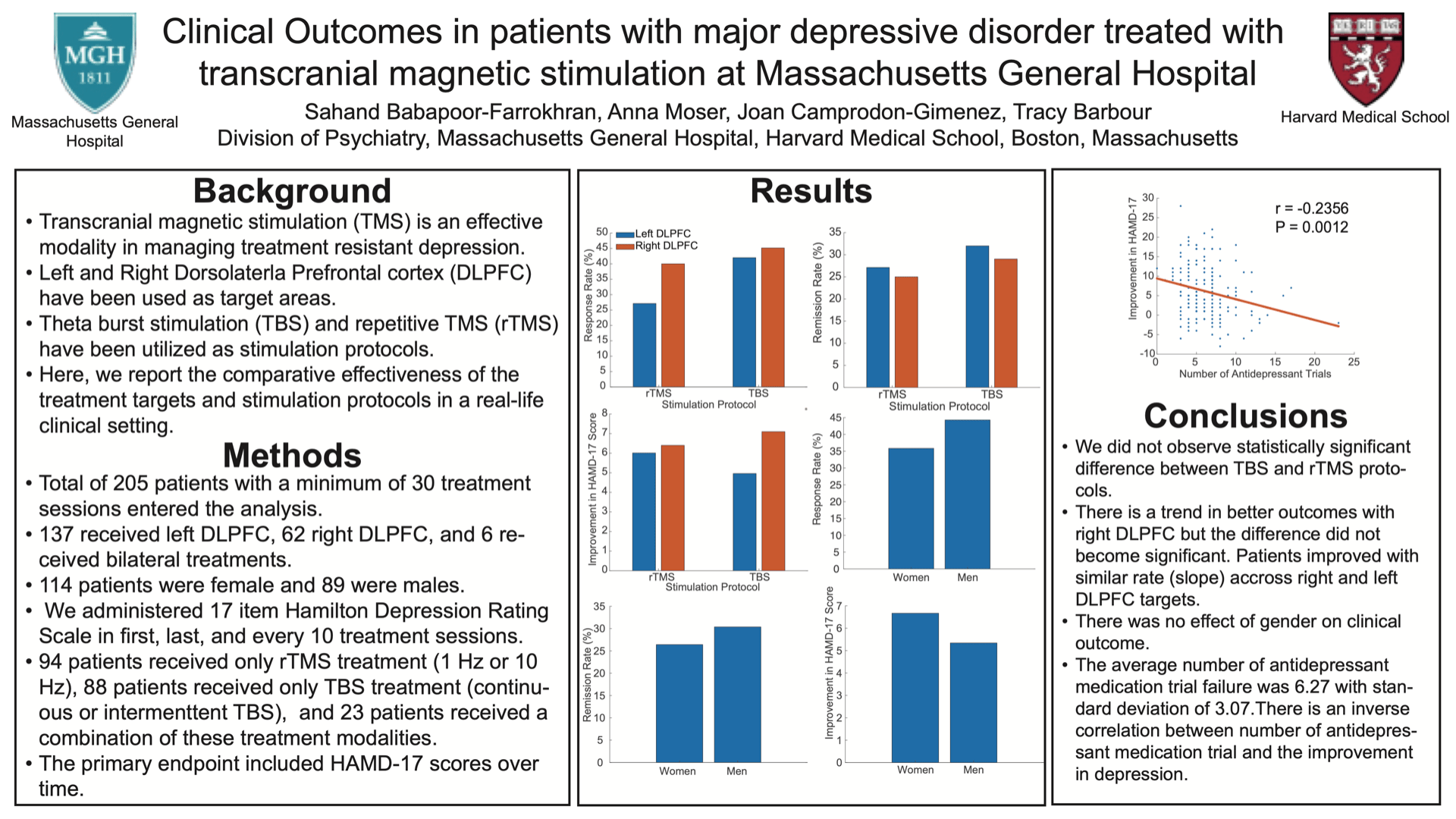Scientific Abstract
Background: Transcranial Magnetic Stimulation (TMS) has been utilized to treat patients with treatment resistant depression (TRD). In recent years, different target areas and a variety of stimulation protocols have been introduced and the comparative effectiveness of these stimulation regimens is still not well established.
Methods: We report clinical outcomes from 205 patients who received TMS at Massachusetts General Hospital. Patients finished a minimum of 30 sessions. TMS targets were right dorsolateral prefrontal cortex (DLPFC), left DLPFC, or both. Patients received a variety of stimulation protocols, namely continuous theta burst stimulation (cTBS) for right DLPFC, intermittent theta burst stimulation (iTBS) for left DLPFC, and repetitive TMS (rTMS) with 1 Hz and 10 Hz stimulation frequencies for right and left DLPFC respectively. We primarily used 17 item Hamilton rating scale for depression (HAMD-17) to quantify depressive symptoms.
Results: Of the 205 patients, 137 started with left DLPFC, 62 with right DLPFC, and 6 with bilateral treatments. Overall response rate was 34.76% and remission rate was 26.34%. The response rate for right DLPFC (43.1%) tended to be slightly higher than that of the left DLPFC target (31.71%) but the difference was not statistically significant. Furthermore, there was not a significant difference between TBS and rTMS. The average number of failed antidepressant medication trials was 6.27 (SD: 3.07), and the number of failed trials was inversely correlated with the improvement in depression through TMS treatment.
Conclusions: We did not find a significant difference between rTMS and TBS treatments. One interesting finding was that right DLPFC stimulation was at least as effective (if not more effective) as that of the left DLPFC. This finding needs to be further replicated by a higher sample size in future. Our findings further confirm that TMS is an effective treatment for TRD.
Search posters

